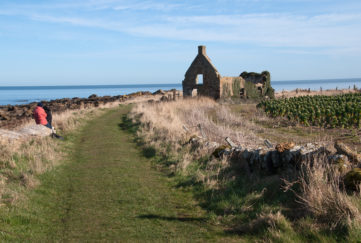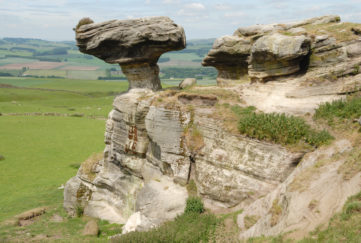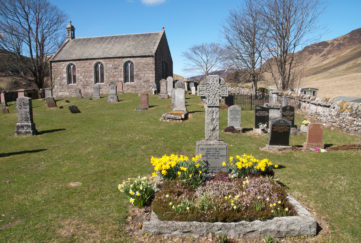The Legacy Of Ironbridge Gorge
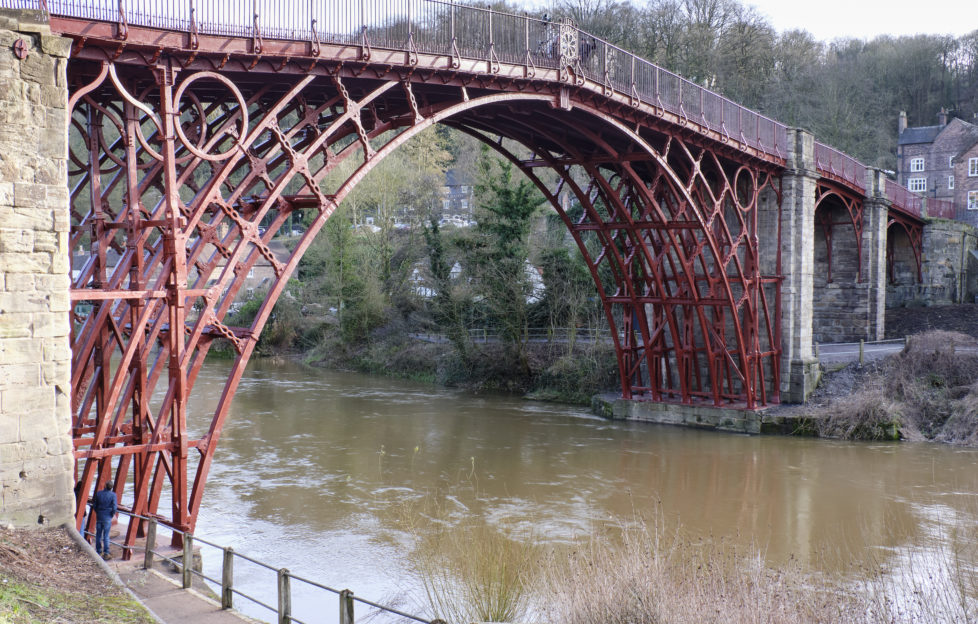
With the news that a singing policeman from Ironbridge is in the running for a major tourism award, we thought we’d revisit this article on the area by “Friend” travel writer Simon Whaley.
It was originally published in our December 4, 2019 issue.
Two hundred and twenty years ago, the only way to cross this point of the River Severn in Shropshire was by boat.
And at this time of year, with a December chill racing through the gorge and the winter rains draining off the Welsh mountains 90 miles away, that could be extremely dangerous.
Known then as Coalbrookdale, 12 miles downstream from Shrewsbury, this narrow gorge funnels the River Severn around the steep-sided and heavily wooded Benthall Edge.
During the winter flooding season the river level can rise by over five metres!
From my vantage point in the middle of the river, my feet are dry thanks to Abraham Darby III. He it was who built the first bridge in the world to be constructed entirely from cast iron. And it’s still standing here today.
Abraham should be proud.
Not only was this area of the gorge renamed as Ironbridge, but in 1986 it was also designated one of the first World Heritage Sites in the UK.
That’s not all that’s changed.
Birthplace of the Industrial Revolution
Over two centuries ago the air would have been thick with acrid smoke produced by the huge blast furnaces dotted along this gorge as they churned out vast quantities of iron.
Glancing upstream, I spy visitors browsing the festively trimmed gift shops and a young family feeding the ducks.
You’d never think this quiet corner of Shropshire was the birthplace of the Industrial Revolution.
Today, there are 10 attractions exploring the story of the gorge and the Industrial Revolution, enough to keep visitors entertained for a whole weekend, if not more.
Armed with my passport ticket, which allows me to explore all of the museums as many times as I like for a year, I’m about to time-travel through some of the world’s most important history.
A short stroll from the bridge is the Museum of the Gorge, right on the banks of the river.
The river keeps locals on their toes
It used to be a loading station, where wagons of finished goods were transported to the river, before being transferred on to barges for the rest of their journey down to Bristol.
Today, the Severn is running higher than usual, and the tracks are submerged. The river continues to keeps locals on their toes.
About half a mile away, in a side valley still called Coalbrookdale, is the Museum of Iron.
Within its grounds are the remains of the furnaces owned by Abraham Darby III’s grandfather, Abraham Darby.
It’s now protected from the weather under a modern canopy, and I climb a set of steps and peer down into the huge furnace.
When the furnaces were roaring, temperatures would reach up to 1,300 degrees centigrade!
Although iron has been produced for thousands of years, it had always been an expensive process.
Good-quality iron was made using furnaces fuelled by charcoal. But charcoal was costly, because it took time to produce and used a lot of trees.
Although the gorge was wooded, people soon realised the supply of trees was limited.
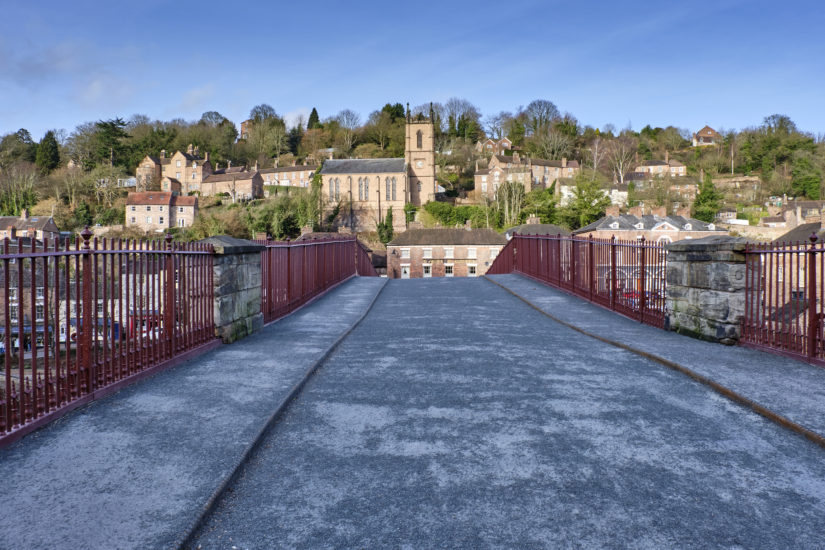
Photograph by Simon Whaley.
The second biggest river in Europe
In 1709, Darby was the first to smelt good-quality iron using a furnace fuelled by coke, rather than charcoal.
Here in East Shropshire, there were vast coalfields, which meant a plentiful supply of cheap coke. His business, the Coalbrookdale Company, produced everyday items, such as bowls, cookware and utensils.
Forty years later, his son, Abraham Darby II, successfully produced pig-iron from coke-fuelled furnaces.
Pig-iron gets its name from the way it was drawn from the furnaces. In hot liquid form, it would run out of the bottom of the furnace, through channels in sand.
These resembled a sow with her piglets, hence pig-iron!
This enabled the Coalbrookdale Company to create huge iron fountains, cast in intricate shapes, and whaling pots, which they exported all over the world.
During the Industrial Revolution, the River Severn was the second busiest river in Europe. It gave the Coalbrookdale Company a cheap way of transporting their goods to Bristol, which was one of the world’s busiest ports back then.
With all this industry operating within the gorge, the only way to transport coke from one side of the river to the furnaces on the other was by ferry.
The Severn’s variable river levels, however, meant there were times of the year when the small ferries struggled.
Keen to show off the iron-making skills his grandfather and father had passed down to him, Abraham Darby III proposed a cast-iron bridge.
Many feared such a bridge would collapse. Never before had iron been used to build anything so large.
Next to the Museum of Iron is Enginuity, a fantastic nod to all sorts of modern engineering feats.
I have to bring my nephew here
It’s hands-on fun for all the family, which is perfect for the school holidays. You can dam up a stream to create hydro-electricity, and I have great fun building an earthquake-proof building.
I’ll have to bring my nephew here. Perhaps I won’t feel such a big kid playing with these entertaining exhibits then!
Two miles downstream from the Iron Bridge is Blists Hill Victorian Museum. This open-air museum lets visitors step back in time to a Victorian way of life.
There are workers’ cottages, a grocer’s, chemist’s, a bank and even a butcher’s to visit.
My advice is to go into the bank and change your money into pounds, shillings and pence! As someone born in the year we went decimal, these coins all look a bit strange to me.
But I can use the money to buy things in the shops. The post office is selling Christmas cards for 1d each or three for 2½d.
I buy one, and hold out my hand with the funny money as the postmistress takes what she needs. It’s like being on a foreign holiday.
Through the window of the Victorian sweet shop I spy jars of old-fashioned sweets. Who remembers rhubarb and custard, floral gums, gobstoppers, sherbet fountains and more?
I’m not sure I’ll be able to drag my nephew out of this shop.
Many of the Ironbridge museums are open throughout the year, and at Blists Hill they’ve even decorated for Christmas.
The best viewpoint
There’s a huge Season’s Greetings sign in the bakery window, along with some festive mince-pies and shortbread.
It was the Victorians who began many of our Christmas traditions, and the Victorian doctor’s surgery is decorated, too.
A simple wreath hangs on the bright red door, and colourful Christmas cards adorn the shelves in the parlour. There’s even a tree with paper chains and candles in the drawing-room.
Just to get us in the mood, there’s a snow machine churning out the fake white stuff outside the butcher’s and chemist’s shops!
Further downstream is the Jackfield Tile Museum, once the heart of British tile production, and the Coalport China Museum where fine china vases, crockery and statues were once produced.
I check my watch, and it’s getting late, so I’ll have to save those for another day. Thankfully, my annual passport ticket means I can.
Instead I head back towards the Iron Bridge, and slip down some steps to the Severn-side footpath, which takes me right under the substantial, five-arch beams that support the bridge.
From this angle, it’s easier to appreciate the challenge Abraham Darby III faced in making these iron girders, let alone transporting them here and manoeuvring them into place.
The best viewpoint, though, has to be from the bridge’s apex.
The sun has come out, and 60 feet below, the River Severn is slipping sedately by. A bit of rain could change all that.
But with so many fascinating museums to explore here, Ironbridge is an interesting place to visit, even on a damp day in December!
For more travel advice from “The People’s Friend”, click here.
For more information on Ironbridge, click here.


